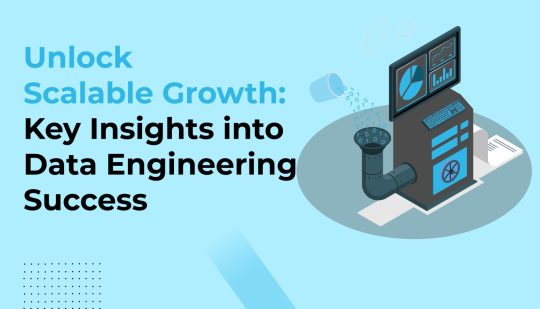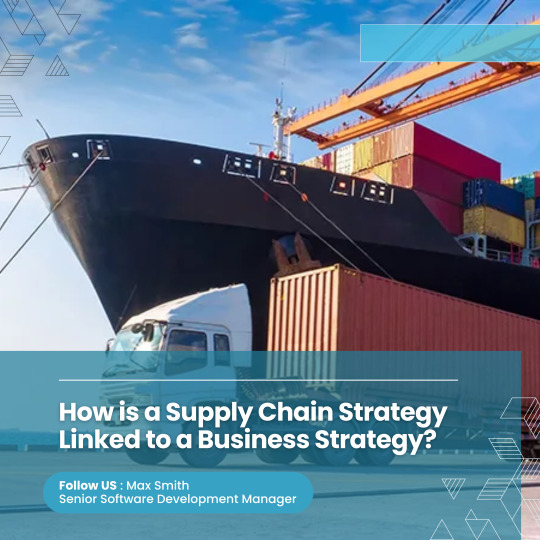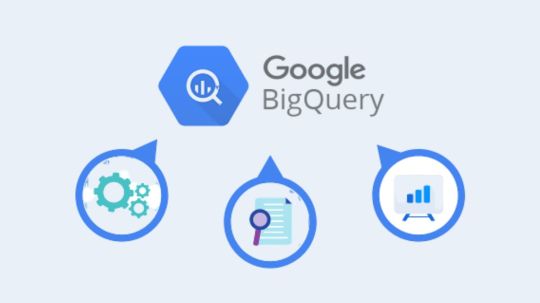#Data warehousing solutions
Explore tagged Tumblr posts
Text
Investing in professional data warehouse consulting can significantly enhance your organization's ability to manage, analyze, and leverage data for strategic decision-making. Expert consultants help design scalable, efficient, and secure data infrastructures that reduce operational costs, improve data accuracy, and accelerate insights.
#data warehouse consulting#data warehousing solutions#data warehousing problems and solutions#data warehousing solution
0 notes
Text
Why Your Business Needs SAP Data Analytics Consulting in 2024
Unlock the full potential of your SAP data! Explore how SAP Data Analytics Consulting can help businesses in 2024 drive better insights, optimize processes, and make data-driven decisions. Discover key strategies and benefits tailored for modern business challenges. Read more by clicking on the link
0 notes
Text
Improve the accessibility and quality of your data with Scalable Data Warehousing Solutions. Outrank your competitors by making smarter data-driven decisions.
0 notes
Text
In today’s data-driven world, businesses need reliable and scalable ETL (Extract, Transform, Load) processes to manage massive volumes of information from multiple sources. Hiring experienced ETL developers ensures smooth data integration, optimized data warehousing, and actionable insights that drive strategic decision-making.
0 notes
Text
Deep Learning Solutions for Real-World Applications: Trends and Insights
Deep learning is revolutionizing industries by enabling machines to process and analyze vast amounts of data with unprecedented accuracy. As AI-powered solutions continue to advance, deep learning is being widely adopted across various sectors, including healthcare, finance, manufacturing, and retail. This article explores the latest trends in deep learning, its real-world applications, and key insights into its transformative potential.
Understanding Deep Learning in Real-World Applications
Deep learning, a subset of machine learning, utilizes artificial neural networks (ANNs) to mimic human cognitive processes. These networks learn from large datasets, enabling AI systems to recognize patterns, make predictions, and automate complex tasks.
The adoption of deep learning is driven by its ability to:
Process unstructured data such as images, text, and speech.
Improve accuracy with more data and computational power.
Adapt to real-world challenges with minimal human intervention.
With these capabilities, deep learning is shaping the future of AI across industries.

Key Trends in Deep Learning Solutions
1. AI-Powered Automation
Deep learning is driving automation by enabling machines to perform tasks that traditionally required human intelligence. Industries are leveraging AI to optimize workflows, reduce operational costs, and improve efficiency.
Manufacturing: AI-driven robots are enhancing production lines with automated quality inspection.
Customer Service: AI chatbots and virtual assistants are improving customer engagement.
Healthcare: AI automates medical imaging analysis for faster diagnosis.
2. Edge AI and On-Device Processing
Deep learning models are increasingly deployed on edge devices, reducing dependence on cloud computing. This trend enhances:
Real-time decision-making in autonomous systems.
Faster processing in mobile applications and IoT devices.
Privacy and security by keeping data local.
3. Explainable AI (XAI)
As deep learning solutions become integral to critical applications like finance and healthcare, explainability and transparency are essential. Researchers are developing Explainable AI (XAI) techniques to make deep learning models more interpretable, ensuring fairness and trustworthiness.
4. Generative AI and Creative Applications
Generative AI models, such as GPT (text generation) and DALL·E (image synthesis), are transforming creative fields. Businesses are leveraging AI for:
Content creation (automated writing and design).
Marketing and advertising (personalized campaigns).
Music and video generation (AI-assisted production).
5. Self-Supervised and Few-Shot Learning
AI models traditionally require massive datasets for training. Self-supervised learning and few-shot learning are emerging to help AI learn from limited labeled data, making deep learning solutions more accessible and efficient.
Real-World Applications of Deep Learning Solutions
1. Healthcare and Medical Diagnostics
Deep learning is transforming healthcare by enabling AI-powered diagnostics, personalized treatments, and drug discovery.
Medical Imaging: AI detects abnormalities in X-rays, MRIs, and CT scans.
Disease Prediction: AI models predict conditions like cancer and heart disease.
Telemedicine: AI chatbots assist in virtual health consultations.
2. Financial Services and Fraud Detection
Deep learning enhances risk assessment, automated trading, and fraud detection in the finance sector.
AI-Powered Fraud Detection: AI analyzes transaction patterns to prevent cyber threats.
Algorithmic Trading: Deep learning models predict stock trends with high accuracy.
Credit Scoring: AI evaluates creditworthiness based on financial behavior.
3. Retail and E-Commerce
Retailers use deep learning for customer insights, inventory optimization, and personalized shopping experiences.
AI-Based Product Recommendations: AI suggests products based on user behavior.
Automated Checkout Systems: AI-powered cameras and sensors enable cashier-less stores.
Demand Forecasting: Deep learning predicts inventory needs for efficient supply chain management.
4. Smart Manufacturing and Industrial Automation
Deep learning improves quality control, predictive maintenance, and process automation in manufacturing.
Defect Detection: AI inspects products for defects in real-time.
Predictive Maintenance: AI predicts machine failures, reducing downtime.
Robotic Process Automation (RPA): AI automates repetitive tasks in production lines.
5. Transportation and Autonomous Vehicles
Self-driving cars and smart transportation systems rely on deep learning for real-time decision-making and navigation.
Autonomous Vehicles: AI processes sensor data to detect obstacles and navigate safely.
Traffic Optimization: AI analyzes traffic patterns to improve city traffic management.
Smart Logistics: AI-powered route optimization reduces delivery costs.
6. Cybersecurity and Threat Detection
Deep learning strengthens cybersecurity defenses by detecting anomalies and preventing cyber attacks.
AI-Powered Threat Detection: Identifies suspicious activities in real time.
Biometric Authentication: AI enhances security through facial and fingerprint recognition.
Malware Detection: Deep learning models analyze patterns to identify potential cyber threats.
7. Agriculture and Precision Farming
AI-driven deep learning is improving crop monitoring, yield prediction, and pest detection.
Automated Crop Monitoring: AI analyzes satellite images to assess crop health.
Smart Irrigation Systems: AI optimizes water usage based on weather conditions.
Disease and Pest Detection: AI detects plant diseases early, reducing crop loss.
Key Insights into the Future of Deep Learning Solutions
1. AI Democratization
With the rise of open-source AI frameworks like TensorFlow and PyTorch, deep learning solutions are becoming more accessible to businesses of all sizes. This democratization of AI is accelerating innovation across industries.
2. Ethical AI Development
As AI adoption grows, concerns about bias, fairness, and privacy are increasing. Ethical AI development will focus on creating fair, transparent, and accountable deep learning solutions.
3. Human-AI Collaboration
Rather than replacing humans, deep learning solutions will enhance human capabilities by automating repetitive tasks and enabling AI-assisted decision-making.
4. AI in Edge Computing and 5G Networks
The integration of AI with edge computing and 5G will enable faster data processing, real-time analytics, and enhanced connectivity for AI-powered applications.
Conclusion
Deep learning solutions are transforming industries by enhancing automation, improving efficiency, and unlocking new possibilities in AI. From healthcare and finance to retail and cybersecurity, deep learning is solving real-world problems with remarkable accuracy and intelligence.
As technology continues to advance, businesses that leverage deep learning solutions will gain a competitive edge, driving innovation, efficiency, and smarter decision-making. The future of AI is unfolding rapidly, and deep learning remains at the heart of this transformation.
Stay ahead in the AI revolution—explore the latest trends and insights in deep learning today!
#Deep learning solutions#Big Data and Data Warehousing service#Data visualization#Predictive Analytics#Data Mining#Deep Learning
1 note
·
View note
Text

Data Engineering services have become a growing necessity as organizations struggle to manage exponentially increasing volumes of data. Efficient Data Engineering services empower companies to leverage data for strategic decision-making, ensuring they maintain a competitive edge.
By implementing the right frameworks, businesses can continuously innovate and stay ahead of industry challenges.
#data solutions#business insights#advanced analytics#data driven decisions#it services#data engineering#data warehousing
0 notes
Text
Implementing a robust Warehouse Management System (WMS) is pivotal for businesses engaged in logistics and warehouse operations. A sophisticated WMS streamlines processes and enhances logistic optimization, ensuring that goods move smoothly from suppliers to customers. This integration of technology in modern logistics transforms traditional warehousing into a seamless, efficient, and highly productive component of the supply chain.
0 notes
Text
Our qualified and experienced Data Engineers will optimize and transform your data to help you make better business decisions.
0 notes
Text

Navigating the Future with Cloud-Based Data Warehousing: Empowering Enterprises with Atgeir Solution
Atgeir Solution pioneers modern data warehousing, empowering enterprises with expert Cloud Data Warehouse solutions. We tackle challenges such as slow analytics, unreasonable costs, and poor data pipelines, leveraging our rich experience in traditional data warehouses. Our expertise lies in seamlessly migrating traditional warehouses to the cloud, unifying data from multiple sources, improving performance, enhancing disaster recovery, and ensuring scalable and flexible solutions. Experience the ease and power of cloud-based data warehousing with Atgeir Solution!
0 notes
Text
This blog covers the latest trends in Data Warehousing, including the role of new technologies like AI, data streaming, and machine learning. We aim to help data professionals stay ahead in the field by embracing these advancements. Read this full blog.
1 note
·
View note
Text
#data warehousing consulting services and solutions#data warehousing solution#data warehousing solutions#data warehousing solutions for digital agencies
0 notes
Text
Why Modernizing Data Warehousing Solutions is Significance for Today’s Business
Unlock efficiency and real-time insights with GrayMatter's modern data warehousing solutions. Our expert approach transforms data processes, empowering smarter decisions and giving your business a competitive edge in today’s data-driven world. Read the blog to learn more.
0 notes
Text
Learn how AI-enabled data warehouses can enhance your analytics capabilities. This article explores the benefits of automated data integration, optimization and insights for better business decision making.
0 notes
Text
In today’s fast-paced world of logistics innovation and evolution have become the driving forces behind success. As we step into 2024, the logistics sector will undergo extensive disruptions, fueled by game-changing innovations that promise to revolutionize supply chain management as we know it.
At iFour, we take immense pride in our expertise in the logistics industry, and we are excited to share with you the trends that are currently transforming this dynamic sector in Australia. As a leading custom Logistics software development company, we understand the unique challenges and opportunities facing businesses in the Australian market.
Here are the key trends that are reshaping the logistics landscape and how our solutions can help your company stay ahead of the curve.
#Supply Chain Technology#E-commerce Logistics#Automation and Robotics#Blockchain in Logistics#Sustainable and Green Logistics#Last-Mile Delivery Solutions#Data Analytics and Predictive Insights#3D Printing in Logistics#IoT (Internet of Things) in Supply Chain#Artificial Intelligence in Transportation#On-Demand and Sharing Economy Logistics#Digital Twins in Warehousing#Autonomous Vehicles and Drones#Climate Change and Resilience Planning#Cross-Border Trade and Customs#Cybersecurity in Supply Chain#Inventory Management Strategies#Reverse Logistics and Returns#Multi-Modal Transportation#software outsourcing#software development company#.net development
0 notes
Text
How is a supply chain strategy linked to a business strategy?
In today’s competitive and unpredictable global market, the integration of supply chain strategy with business strategy is not optional—it is essential. Supply chain management (SCM) is no longer a back-office function but a core component in driving business growth, profitability, and operational efficiency. Companies that align their supply chain targets with their primary business objectives tend to perform better in terms of consumer satisfaction and financial performance than other organizations.

1. Cutting Costs and Improving Efficiency
A strategic supply chain approach identifies cost-saving opportunities without compromising speed or quality. According to McKinsey, aligning supply chain and business goals can reduce costs by up to 15% and boost service levels by 20%.
When the supply chain management supports business goals, it becomes easier to identify cost-saving opportunities without sacrificing quality or speed.
2. Improving Customer Experience
Many companies focus on customer satisfaction when creating their business strategies. When a supply chain management strategy is well-integrated, it guarantees goods are delivered on schedule, are always available and meets customer needs.
According to Gartner, an overwhelming portion of supply chain leaders say connecting their strategy to customer experience is vital for growing revenue. Proper SCM leads to faster order satisfaction and visibility of numbers in stock which boosts customer loyalty.
3. Reducing Risk and Ensuring Continuity
Supply chain management disruptions can damage both reputation and revenue. Embedding supply chain strategy into enterprise risk planning improves resilience and allows faster, data-informed responses to disruptions
During the COVID-19 crisis, companies with flexible supply chains were 2.5 times more likely to avoid significant disruptions, according to a report by Deloitte. An innovative supply chain strategy includes backup suppliers, real-time data, and clear recovery plans—all of which support overall business stability.
4. Supporting Sustainability and Compliance
Many companies now set goals around sustainability and ESG (Environmental, Social, and Governance) performance. Supply chain management plays an important role here.
EY found that 61% of businesses now assess the sustainability of their suppliers. A supply chain strategy that supports ESG goals enables companies to meet regulations, reduce emissions, and foster trust with stakeholders. It also opens doors to new customers who value responsible business practices.
5. Enabling Growth and Expansion
Growth and market expansion demand a scalable, agile supply chain that can meet increased demand, navigate local regulations, and accelerate go-to-market timelines.
If the supply chain is not aligned, delays and rising costs can quickly hold back growth. On the other hand, a flexible supply chain management strategy enables faster product launches and confident entry into new regions.
Key Supply Chain Management Providers
A lot of organizations depend on third-party supply chain management companies for well-rounded strategies, advanced data analysis, and comprehensive logistics support. Enterprises such as Suma Soft, DHL Supply Chain, Ryder System Inc., XPO Logistics and Geodis are focused on connecting logistics functions to the bigger aims of a business. Using third-party logistics companies to help with transportation, warehousing, and last-mile solutions allows businesses to achieve their key targets.
A strong business strategy depends on an equally strong supply chain strategy. Whether the goal is reducing costs, improving service, managing risks, or supporting sustainability, the supply chain plays a vital role.
Companies that align both strategies experience faster growth, improved performance, and higher customer satisfaction—giving them a clear competitive edge in today's market.
2 notes
·
View notes
Text
Google Cloud’s BigQuery Autonomous Data To AI Platform

BigQuery automates data analysis, transformation, and insight generation using AI. AI and natural language interaction simplify difficult operations.
The fast-paced world needs data access and a real-time data activation flywheel. Artificial intelligence that integrates directly into the data environment and works with intelligent agents is emerging. These catalysts open doors and enable self-directed, rapid action, which is vital for success. This flywheel uses Google's Data & AI Cloud to activate data in real time. BigQuery has five times more organisations than the two leading cloud providers that just offer data science and data warehousing solutions due to this emphasis.
Examples of top companies:
With BigQuery, Radisson Hotel Group enhanced campaign productivity by 50% and revenue by over 20% by fine-tuning the Gemini model.
By connecting over 170 data sources with BigQuery, Gordon Food Service established a scalable, modern, AI-ready data architecture. This improved real-time response to critical business demands, enabled complete analytics, boosted client usage of their ordering systems, and offered staff rapid insights while cutting costs and boosting market share.
J.B. Hunt is revolutionising logistics for shippers and carriers by integrating Databricks into BigQuery.
General Mills saves over $100 million using BigQuery and Vertex AI to give workers secure access to LLMs for structured and unstructured data searches.
Google Cloud is unveiling many new features with its autonomous data to AI platform powered by BigQuery and Looker, a unified, trustworthy, and conversational BI platform:
New assistive and agentic experiences based on your trusted data and available through BigQuery and Looker will make data scientists, data engineers, analysts, and business users' jobs simpler and faster.
Advanced analytics and data science acceleration: Along with seamless integration with real-time and open-source technologies, BigQuery AI-assisted notebooks improve data science workflows and BigQuery AI Query Engine provides fresh insights.
Autonomous data foundation: BigQuery can collect, manage, and orchestrate any data with its new autonomous features, which include native support for unstructured data processing and open data formats like Iceberg.
Look at each change in detail.
User-specific agents
It believes everyone should have AI. BigQuery and Looker made AI-powered helpful experiences generally available, but Google Cloud now offers specialised agents for all data chores, such as:
Data engineering agents integrated with BigQuery pipelines help create data pipelines, convert and enhance data, discover anomalies, and automate metadata development. These agents provide trustworthy data and replace time-consuming and repetitive tasks, enhancing data team productivity. Data engineers traditionally spend hours cleaning, processing, and confirming data.
The data science agent in Google's Colab notebook enables model development at every step. Scalable training, intelligent model selection, automated feature engineering, and faster iteration are possible. This agent lets data science teams focus on complex methods rather than data and infrastructure.
Looker conversational analytics lets everyone utilise natural language with data. Expanded capabilities provided with DeepMind let all users understand the agent's actions and easily resolve misconceptions by undertaking advanced analysis and explaining its logic. Looker's semantic layer boosts accuracy by two-thirds. The agent understands business language like “revenue” and “segments” and can compute metrics in real time, ensuring trustworthy, accurate, and relevant results. An API for conversational analytics is also being introduced to help developers integrate it into processes and apps.
In the BigQuery autonomous data to AI platform, Google Cloud introduced the BigQuery knowledge engine to power assistive and agentic experiences. It models data associations, suggests business vocabulary words, and creates metadata instantaneously using Gemini's table descriptions, query histories, and schema connections. This knowledge engine grounds AI and agents in business context, enabling semantic search across BigQuery and AI-powered data insights.
All customers may access Gemini-powered agentic and assistive experiences in BigQuery and Looker without add-ons in the existing price model tiers!
Accelerating data science and advanced analytics
BigQuery autonomous data to AI platform is revolutionising data science and analytics by enabling new AI-driven data science experiences and engines to manage complex data and provide real-time analytics.
First, AI improves BigQuery notebooks. It adds intelligent SQL cells to your notebook that can merge data sources, comprehend data context, and make code-writing suggestions. It also uses native exploratory analysis and visualisation capabilities for data exploration and peer collaboration. Data scientists can also schedule analyses and update insights. Google Cloud also lets you construct laptop-driven, dynamic, user-friendly, interactive data apps to share insights across the organisation.
This enhanced notebook experience is complemented by the BigQuery AI query engine for AI-driven analytics. This engine lets data scientists easily manage organised and unstructured data and add real-world context—not simply retrieve it. BigQuery AI co-processes SQL and Gemini, adding runtime verbal comprehension, reasoning skills, and real-world knowledge. Their new engine processes unstructured photographs and matches them to your product catalogue. This engine supports several use cases, including model enhancement, sophisticated segmentation, and new insights.
Additionally, it provides users with the most cloud-optimized open-source environment. Google Cloud for Apache Kafka enables real-time data pipelines for event sourcing, model scoring, communications, and analytics in BigQuery for serverless Apache Spark execution. Customers have almost doubled their serverless Spark use in the last year, and Google Cloud has upgraded this engine to handle data 2.7 times faster.
BigQuery lets data scientists utilise SQL, Spark, or foundation models on Google's serverless and scalable architecture to innovate faster without the challenges of traditional infrastructure.
An independent data foundation throughout data lifetime
An independent data foundation created for modern data complexity supports its advanced analytics engines and specialised agents. BigQuery is transforming the environment by making unstructured data first-class citizens. New platform features, such as orchestration for a variety of data workloads, autonomous and invisible governance, and open formats for flexibility, ensure that your data is always ready for data science or artificial intelligence issues. It does this while giving the best cost and decreasing operational overhead.
For many companies, unstructured data is their biggest untapped potential. Even while structured data provides analytical avenues, unique ideas in text, audio, video, and photographs are often underutilised and discovered in siloed systems. BigQuery instantly tackles this issue by making unstructured data a first-class citizen using multimodal tables (preview), which integrate structured data with rich, complex data types for unified querying and storage.
Google Cloud's expanded BigQuery governance enables data stewards and professionals a single perspective to manage discovery, classification, curation, quality, usage, and sharing, including automatic cataloguing and metadata production, to efficiently manage this large data estate. BigQuery continuous queries use SQL to analyse and act on streaming data regardless of format, ensuring timely insights from all your data streams.
Customers utilise Google's AI models in BigQuery for multimodal analysis 16 times more than last year, driven by advanced support for structured and unstructured multimodal data. BigQuery with Vertex AI are 8–16 times cheaper than independent data warehouse and AI solutions.
Google Cloud maintains open ecology. BigQuery tables for Apache Iceberg combine BigQuery's performance and integrated capabilities with the flexibility of an open data lakehouse to link Iceberg data to SQL, Spark, AI, and third-party engines in an open and interoperable fashion. This service provides adaptive and autonomous table management, high-performance streaming, auto-AI-generated insights, practically infinite serverless scalability, and improved governance. Cloud storage enables fail-safe features and centralised fine-grained access control management in their managed solution.
Finaly, AI platform autonomous data optimises. Scaling resources, managing workloads, and ensuring cost-effectiveness are its competencies. The new BigQuery spend commit unifies spending throughout BigQuery platform and allows flexibility in shifting spend across streaming, governance, data processing engines, and more, making purchase easier.
Start your data and AI adventure with BigQuery data migration. Google Cloud wants to know how you innovate with data.
#technology#technews#govindhtech#news#technologynews#BigQuery autonomous data to AI platform#BigQuery#autonomous data to AI platform#BigQuery platform#autonomous data#BigQuery AI Query Engine
2 notes
·
View notes